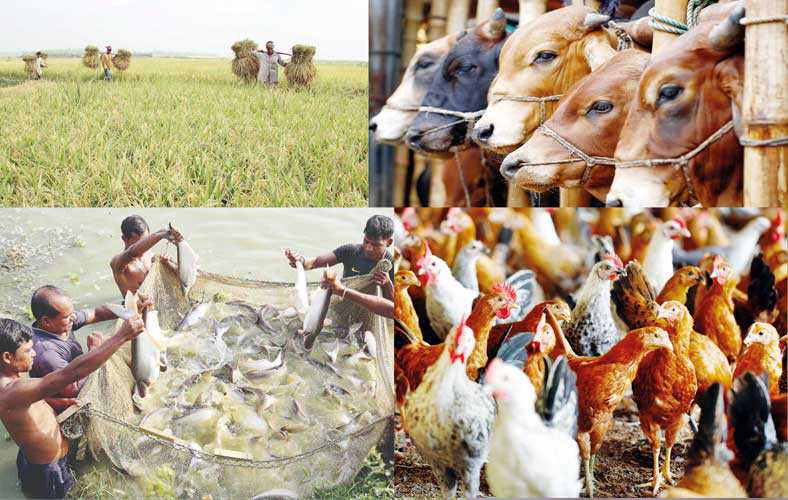Farm growth propels Bangladesh’s faster economic progress

Image collected
International development agencies have projected that the country will stand out by growing at record 8% in 2019 and 2020, making it the fastest growing economy in Asia-Pacific
At a time when the global economic outlook is challenging, and growth is expected to moderate across most of developing Asia at 5.7% in 2019 and 5.6% in 2020, Bangladesh will continue to be the fastest growing economy in the Asia-Pacific region.
International development agencies have projected that the country will stand out by growing at record 8% in 2019 and 2020, making it the fastest growing economy in Asia-Pacific. Today, Bangladesh is seen as a model for growth even in this difficult global economic outlook.
And in this growth story, agriculture is an important sector for Bangladesh. The country has gained significant success in agriculture, achieving third fastest growth in vegetable production, fourth position in rice production, third in fish production from inland water bodies, fifth in aquaculture production and seventh position in mango production in the world.
The country is now self sufficient in rice and fish production.
After being self-sufficient in fish production for the first time in 2018, Bangladesh has started to get global recognition as one of the biggest fish producers.
The country was ranked third in producing fish from inland waterbodies, behind China and India, according to a report of Food and Agriculture Organization (FAO).
The country was the fifth on the list the previous year.
Banking on its strong farm-based economy, Bangladesh fared well over the past decade in developing its non-farm economic activities, export basket and remittance income.
Earlier this year the Asian Development Bank declared that Bangladesh had achieved the fastest growth in the Asia-Pacific economies comprised of 45 countries by posting 7.9% growth, which was the fastest expansion since 1974.
The bank predicted that the growth would be 8% in the FY2019 and FY2020, terming it a new record.
Bangladesh’s attainment of high growth rate comes at a time when the growth projected to be remain moderate across most of developing Asia – 5.7% in 2019 and 5.6% in 2020 from 6.2% in 2017 and 5.9% in 2018.
Growth in crop sector
Bangladesh’s rice production marked a whopping 37% growth to 36 million tons in between 2009 and 2018, with the government now looking for export markets to sell the surplus rice.
During the same period, wheat production rose by 57% to 12 million tons, maize production grew by 646% to 39 million tons, potato production increased by 148% to 103 million tons, pulses production grew by 275% to 10 million tons.
Success in fish production
Over the past few years, Bangladesh not only attained self-sufficiency in fish production. But also witnessed a tremendous boom in the production of its most prized fish – Ilish.
Annual Ilish output grew from 299,003 tons in 2008-09 to 517,000 tons in the last fiscal year.
According to a FAO fisheries and aquaculture report, Bangladesh produced a total of 1,048,242 tons of fish from inland waterbodies in 2016, making the country third in this segment with China topping the list with 2,318,046 tons, and India coming in second place with 1,462,063 tons. Myanmar and Cambodia secured fourth and fifth positions.
In overall aquaculture production, Bangladesh was placed fifth by producing 2.2 million tons with China again topping that list with a production of 4.92 million tons.
FAO report also said Bangladesh produced over 11,300,000 tons of fish from marine and costal sources, and ranked 11th in the list.
Livestock sector developing too
The livestock and dairy sector is developing fast too with many educated youths also showing interest in commercial dairy farms.
Just recently, the World Bank approved a $500 million fund for Bangladesh to boost livestock and dairy production in the country.
According to official statistics, the number of cattle heads that used to make into Bangladesh from India was upto 2,500,000 a year previously but it has gone down to only 92,000 last year.
Officials attributed such drop to development of livestock sector in the country.
In the meantime, Bangladesh’s poultry sector is gearing up to export eggs and poultry meat by 2024. The sector has nearly closed the gap between the domestic demand with a growing supply of both eggs and meat; the country’s poultry farms are growing at a faster rate of 15% a year. l
Source: https://www.dhakatribune.com